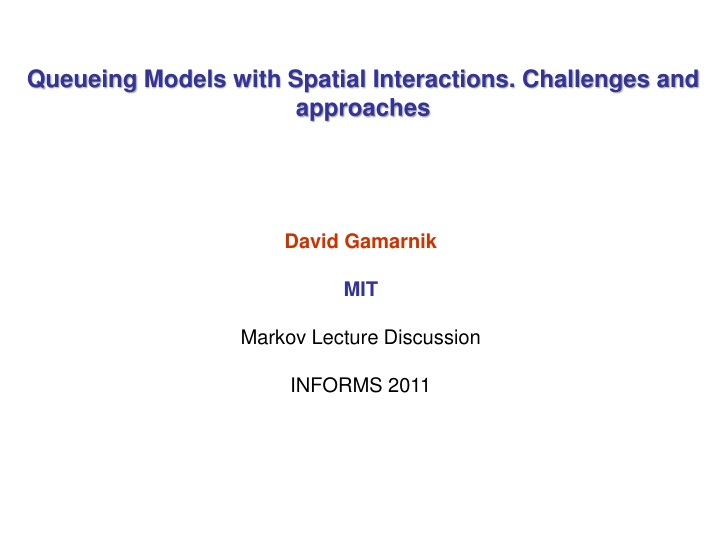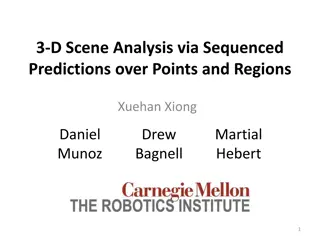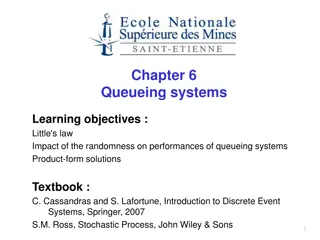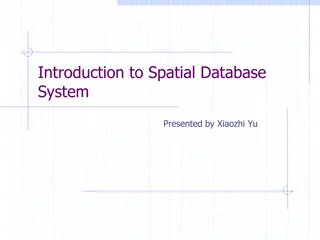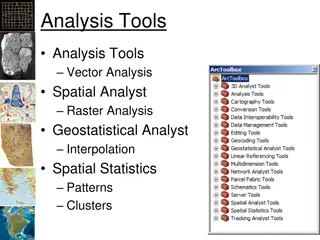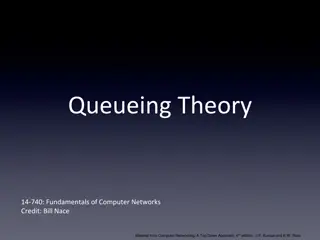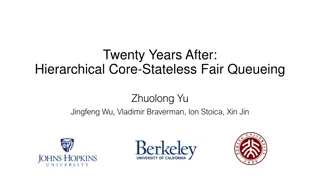Spatial Interactions in Queueing Models: Challenges and Approaches
Explore the complexities of queueing models with spatial interactions, delving into loss models, stability questions, and performance analyses. Researchers tackle the stability of systems based on job sizes and arrival rates in various scenarios. Discover insights from statistical physics and the quest for general-purpose tools in this intriguing field.
Download Presentation

Please find below an Image/Link to download the presentation.
The content on the website is provided AS IS for your information and personal use only. It may not be sold, licensed, or shared on other websites without obtaining consent from the author.If you encounter any issues during the download, it is possible that the publisher has removed the file from their server.
You are allowed to download the files provided on this website for personal or commercial use, subject to the condition that they are used lawfully. All files are the property of their respective owners.
The content on the website is provided AS IS for your information and personal use only. It may not be sold, licensed, or shared on other websites without obtaining consent from the author.
E N D
Presentation Transcript
Queueing Models with Spatial Interactions. Challenges and approaches David Gamarnik MIT Markov Lecture Discussion INFORMS 2011
Queueing models with interactions Renyi parking model Wireless communications Computer systems Reservation systems (hotels) Physics and chemistry Harrison Network
Baryshnikov, Coffman & Jelenkovic [2004]. Space filling and depletion. Jobs with length arrive at every integer point with Poisson rate Exp service times At most k overlapping jobs can be accepted for service Loss model: jobs not accepted are dropped Queueing model: jobs form queue
Baryshnikov, Coffman & Jelenkovic [2004]. Space filling and depletion. Questions: loss rate? Stability? Queue length? Wait times? BC&J: solved loss model when k=1 and general k, and length l=1,2. Used generating function method. But alternatively one can view it as a Markov chain (see later). Stability question is wide open even in the uniform case.
Baccelli & Foss [2011]. Poisson Hail on a Hot Ground Jobs have general (Borel) shape. General interarrival and service times. Ovelapping jobs form queues. Question: stability.
Baccelli & Foss [2011]. Poisson Hail on a Hot Ground Theorem [BF] . The system is stable if job sizes have exponential tails and the arrival rate is sufficiently small. Tight conditions for stability is open. Performance analysis (queue length, space utilization) open.
Where can we search for general purpose tools? A small detour into statistical physics. ;
Where can we search for general purpose tools? Independent set (hard-core) model When is small, correlations are short-range. When is large correlations are long-range Conjecture: critical *=3.796 Randall [2011]. *<6.18. Restrepo, Shin, Tetali, Vigoda, Yang [2011]. *>2.38. Shah et al. Applications to wireless communications.
Correlation decay (long-range independence) method The correlation decay method allows computing approximately Weitz [2006]. General graphs, independent sets. G & Katz [2009]. Lattices. Improved earlier estimates for monomer-dimer model with two orders of magnitude. 0.78595 h(3) 0.78599 0.7845 h(3) 0.7862 One-dimensional case is solved easily by reduction to a Markov chain.
Challenges Non Poisson-Exponential models. Are even 1-dim models solvable? Short range vs long-range for non Poisson/Exp models? Interaction between stability and phase transition (long-range dependence). Which one acts first?
